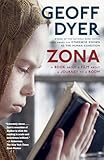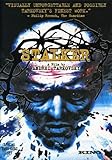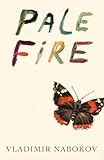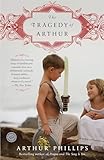
 I used to watch to a lot of DVDs with the audio turned to the commentary track. And not just the monumental works of cinematic wonder the every frame of which is worth analyzing and puzzling over. I worked at a video store — Sneak Reviews in Charlottesville, Va., one of those great labyrinthine stores stocked like an archive — and, bringing home DVDs indiscriminately, I found that even a terrible movie could be saved by simply flipping over and listening to the director, writer, or cast, chat away. Though some have taken great pains to push the commentary track to new heights of performance (see the one for the Coen Brothers’ Blood Simple, in which the possibly fictional artistic director “Kenneth Loring” claims scenes were shot upside-down and in reverse), I was more struck by the commentary tracks that are compelling accidentally: people going on tangents, revealing things obliquely they might later regret. Stallone may be dull as a dial-tone for most of his commentary on Cliffhanger, but the end, when he sounds apologetic and genuinely depressed about his life and career, turns out to be the only engaging and human moment on that disk.
I used to watch to a lot of DVDs with the audio turned to the commentary track. And not just the monumental works of cinematic wonder the every frame of which is worth analyzing and puzzling over. I worked at a video store — Sneak Reviews in Charlottesville, Va., one of those great labyrinthine stores stocked like an archive — and, bringing home DVDs indiscriminately, I found that even a terrible movie could be saved by simply flipping over and listening to the director, writer, or cast, chat away. Though some have taken great pains to push the commentary track to new heights of performance (see the one for the Coen Brothers’ Blood Simple, in which the possibly fictional artistic director “Kenneth Loring” claims scenes were shot upside-down and in reverse), I was more struck by the commentary tracks that are compelling accidentally: people going on tangents, revealing things obliquely they might later regret. Stallone may be dull as a dial-tone for most of his commentary on Cliffhanger, but the end, when he sounds apologetic and genuinely depressed about his life and career, turns out to be the only engaging and human moment on that disk.
A friend once even showed me a porno with a commentary track. While the director offers her insights into the filming process, along with increasingly belligerent rants about her colleagues, she gets completely shit-faced. After about 30 minutes, she passes out, and for the rest of the movie, you can hear her snoring breezily in the background. It’s bizarrely compelling, and if I could remember the title, I’d recommend it heartily. It was around this time that I considered writing a short story in the form of a commentary track for an imaginary movie. I never did write that story (it was probably a terrible idea), but it did get me thinking about all the ways that texts supplementary to larger stories — or “paratexts,” as they’re officially known — can themselves become stories.
 Now, years later, I’m publishing my first novel, Any Resemblance to Actual Persons, which takes the form of one long cease-and-desist letter. Paul McWeeney’s sister is about to publish a nonfiction book in which she accuses their late father of being the Black Dahlia murderer, so in order to save their father’s name, Paul writes a letter to the publishers trying to refute his sister’s claims. As the novel started to take shape, and I realized that Paul’s story would become a discursive commentary on his sister’s story — which itself is a discursive commentary on their father’s story — I began revisiting other books with similar configurations. Pretty soon, I imagined these books forming a loose genre, the Paratext Novel, stories that take the form of — or at least have the pretense of being — explicit exegeses of other stories, real or imagined.
Now, years later, I’m publishing my first novel, Any Resemblance to Actual Persons, which takes the form of one long cease-and-desist letter. Paul McWeeney’s sister is about to publish a nonfiction book in which she accuses their late father of being the Black Dahlia murderer, so in order to save their father’s name, Paul writes a letter to the publishers trying to refute his sister’s claims. As the novel started to take shape, and I realized that Paul’s story would become a discursive commentary on his sister’s story — which itself is a discursive commentary on their father’s story — I began revisiting other books with similar configurations. Pretty soon, I imagined these books forming a loose genre, the Paratext Novel, stories that take the form of — or at least have the pretense of being — explicit exegeses of other stories, real or imagined.

 But perhaps “genre” is not the right word, since these books are not concerned with establishing and enforcing conventions. They are interested in exploring how commentary mediates our lives, how we are so steeped in supplementary material that we rarely directly experiencing whatever it is that material supplements: a phenomenon that these books respond to by making “commentary tracks” more human sites of engagement. Like a lot of people, I still haven’t gotten around to watching Andrei Tarkovsky’s film Stalker, but I found Geoff Dyer’s book Zona — in which he offers a commentary/summary (which he argues is an “expansion”) of the film — fascinating, in part for how Dyer’s parallel self-revelation reminds us how we understand our own stories by encountering others.
But perhaps “genre” is not the right word, since these books are not concerned with establishing and enforcing conventions. They are interested in exploring how commentary mediates our lives, how we are so steeped in supplementary material that we rarely directly experiencing whatever it is that material supplements: a phenomenon that these books respond to by making “commentary tracks” more human sites of engagement. Like a lot of people, I still haven’t gotten around to watching Andrei Tarkovsky’s film Stalker, but I found Geoff Dyer’s book Zona — in which he offers a commentary/summary (which he argues is an “expansion”) of the film — fascinating, in part for how Dyer’s parallel self-revelation reminds us how we understand our own stories by encountering others.
Now, when we pick up a novel, chances are we’ve already seen not just others’ commentary, but also the novelist’s self-commentary in the form of interviews and even articles like this. Whenever a writer comments on his or her own work, there’s inevitably an attempt — futile and foolish — to control how readers engage with that work. But, in these books, attempts at controlling the (ostensibly central) story spin wonderfully into their own stories, illustrating and celebrating the impossibility of narrative intervention and the chaos beneath the illusion of control.
Since listicles have become the new popular form of supplementary text, here are the top five paratext novels that have been buzzfeeding around my brain.
 1. Pale Fire by Vladimir Nabokov: The paratext urtext, or at least the best known, Charles Kinbote’s deranged commentary on John Shade’s 999-line poem features, on its first page, this non-sequitur: “[John Shade] preserved the date of actual creation rather than that of second or third thoughts. There is a very loud amusement park right in front of my present lodgings.” Kinbote’s first interjection here is absurd, hilarious, and even violent in how it forces himself into someone else’s story. As with Lolita, the narrative hinges on control. In that earlier novel, Humbert Humbert not only controls Dolores Haze physically but narratively as well, since he is the one allowed a voice. In Pale Fire, Nabokov more explicitly curates, but also balances, this dynamic, revealing John Shade’s story — the tragic loss of his daughter that is the impetus for the poem — before Kinbote tries to absorb it into, and suppresses it with, his own story. It wasn’t until I read Claire Messud’s reminiscent The Woman Upstairs — about a schoolteacher who becomes obsessed with her student’s family — that I realized Kinbote is not just infiltrating Shade’s art; he’s infiltrating Shade’s family.
1. Pale Fire by Vladimir Nabokov: The paratext urtext, or at least the best known, Charles Kinbote’s deranged commentary on John Shade’s 999-line poem features, on its first page, this non-sequitur: “[John Shade] preserved the date of actual creation rather than that of second or third thoughts. There is a very loud amusement park right in front of my present lodgings.” Kinbote’s first interjection here is absurd, hilarious, and even violent in how it forces himself into someone else’s story. As with Lolita, the narrative hinges on control. In that earlier novel, Humbert Humbert not only controls Dolores Haze physically but narratively as well, since he is the one allowed a voice. In Pale Fire, Nabokov more explicitly curates, but also balances, this dynamic, revealing John Shade’s story — the tragic loss of his daughter that is the impetus for the poem — before Kinbote tries to absorb it into, and suppresses it with, his own story. It wasn’t until I read Claire Messud’s reminiscent The Woman Upstairs — about a schoolteacher who becomes obsessed with her student’s family — that I realized Kinbote is not just infiltrating Shade’s art; he’s infiltrating Shade’s family.
 2. U and I by Nicholson Baker: True, this is not technically a novel, but Nicholson Baker’s “closed book examination” of John Updike’s work reads like no other work of nonfiction I’ve read. Though I would never encourage anyone to not read Updike, ignorance of his oeuvre should not keep you from reading U and I. After all, occasional ignorance certainly doesn’t stop Baker himself, as he misremembers and misunderstands, corrects himself and confesses lapses. That is partly why this book is so strange and so funny, but also because it’s the most honest portrayal of a reader’s relationship with a writer I’ve ever come across: one-sided, heavily mediated, existing entirely in his imagination. In Baker’s literary hero-worship, we begin to realize what we probably knew all along, that it uncomfortably echoes a bastard kid striving for legitimacy, and for simple fatherly validation.
2. U and I by Nicholson Baker: True, this is not technically a novel, but Nicholson Baker’s “closed book examination” of John Updike’s work reads like no other work of nonfiction I’ve read. Though I would never encourage anyone to not read Updike, ignorance of his oeuvre should not keep you from reading U and I. After all, occasional ignorance certainly doesn’t stop Baker himself, as he misremembers and misunderstands, corrects himself and confesses lapses. That is partly why this book is so strange and so funny, but also because it’s the most honest portrayal of a reader’s relationship with a writer I’ve ever come across: one-sided, heavily mediated, existing entirely in his imagination. In Baker’s literary hero-worship, we begin to realize what we probably knew all along, that it uncomfortably echoes a bastard kid striving for legitimacy, and for simple fatherly validation.
 3. Edwin Mullhouse by Stephen Millhauser: The full title, Edwin Mullhouse: The Life and Death of an American Writer 1943-1954 by Jeffrey Cartwright, hints at Millhauser’s interest in complicating the commentary track’s implicit attempt at narrative control and usurpation. This novel takes the form of a biography of Edwin Mullhouse, a supposed literary genius, who wrote a novel called Cartoons before dying mysteriously at age 11. His biographer and friend, Jeffery Cartwright, also a small child, is an insanely precocious Boswell whose relationship with his subject grows increasingly unsettling. Whereas in Pale Fire, John Shade has his brief moment at the microphone before Kinbote rushes the stage, in Mullhouse we have no unmediated access to Edwin — and no unmediated access to the ostensible cause for Edwin’s celebration, his novel Cartoons — which makes for a more disorienting reading experience. In the fictional introduction, the fictional Walter Logan White writes, “I myself have sternly resisted the temptation to read Cartoons, knowing full well that the real book, however much a work of genius, can no more match the shape of my expectations that the real Jeffrey could.” In creating a commentary track that seems to have supplanted Edwin’s novel, Jeffery seems to have supplanted Edwin, a figurative death equally resonant to Edwin’s literal death that illuminates the entire friendship we see develop between the two.
3. Edwin Mullhouse by Stephen Millhauser: The full title, Edwin Mullhouse: The Life and Death of an American Writer 1943-1954 by Jeffrey Cartwright, hints at Millhauser’s interest in complicating the commentary track’s implicit attempt at narrative control and usurpation. This novel takes the form of a biography of Edwin Mullhouse, a supposed literary genius, who wrote a novel called Cartoons before dying mysteriously at age 11. His biographer and friend, Jeffery Cartwright, also a small child, is an insanely precocious Boswell whose relationship with his subject grows increasingly unsettling. Whereas in Pale Fire, John Shade has his brief moment at the microphone before Kinbote rushes the stage, in Mullhouse we have no unmediated access to Edwin — and no unmediated access to the ostensible cause for Edwin’s celebration, his novel Cartoons — which makes for a more disorienting reading experience. In the fictional introduction, the fictional Walter Logan White writes, “I myself have sternly resisted the temptation to read Cartoons, knowing full well that the real book, however much a work of genius, can no more match the shape of my expectations that the real Jeffrey could.” In creating a commentary track that seems to have supplanted Edwin’s novel, Jeffery seems to have supplanted Edwin, a figurative death equally resonant to Edwin’s literal death that illuminates the entire friendship we see develop between the two.
 4. The Tragedy of Arthur by Arthur Phillips: If we close Edwin Mullhouse wondering how much of Edwin’s genius is imagined and manipulated by his biographer-cum-creator Jeffery, in The Tragedy of Arthur, Arthur Phillips — both author and character — relocates this distrust to the familiar battle between Stratfordians and anti-Stratfordians. In the 250-page introduction to a recently recovered Shakespeare play, which might actually be a forgery by his father, the character of Arthur Phillips lays out a childhood fraught with questions of trust and veracity. After the introduction, Phillips presents us with the play in question, and it’s a stunning act of impersonation. Seeing the son’s introduction followed by (what might be) the father’s work reminds us how familial this narrative hijacking really is, just as all of these works ultimately boil down to simple family arguments, an interruption around the dinner table: No, let me finish this story.
4. The Tragedy of Arthur by Arthur Phillips: If we close Edwin Mullhouse wondering how much of Edwin’s genius is imagined and manipulated by his biographer-cum-creator Jeffery, in The Tragedy of Arthur, Arthur Phillips — both author and character — relocates this distrust to the familiar battle between Stratfordians and anti-Stratfordians. In the 250-page introduction to a recently recovered Shakespeare play, which might actually be a forgery by his father, the character of Arthur Phillips lays out a childhood fraught with questions of trust and veracity. After the introduction, Phillips presents us with the play in question, and it’s a stunning act of impersonation. Seeing the son’s introduction followed by (what might be) the father’s work reminds us how familial this narrative hijacking really is, just as all of these works ultimately boil down to simple family arguments, an interruption around the dinner table: No, let me finish this story.
 5. Flaubert’s Parrot by Julian Barnes: Though published in 1985, this novel, featuring narrator Geoffrey Braithwaite’s discursive commentary on Flaubert’s life and work, is my most recent addition to this genre. I borrowed it from my dad after a recent trip to France, where my girlfriend and I visited the Musée Flaubert et d’Histoire de la Medecine. Flaubert’s childhood house in Rouen is now a museum dedicated to both his work as a writer and his father’s work as a surgeon. Although the museum’s marriage of literary and medical does at first feel incongruous, it does form a kind of commentary track, inviting us to see the work of father in son in concert. For example, a sly curator has throughout displayed passages from Gustave’s Dictionary of Received Ideas, and the son’s quote that “all men of letters are constipated” is displayed not far from the father’s very invasive-looking devices to unblock reticent colons — both of which, consolation and cure, would be resonant to anyone suffering the effects of a French diet. Mostly, though, it’s the areas of seeming discord that are most striking. The room featuring Gustave’s childhood scribbles is right next to the room featuring the embalmed cadavers that good ol’ Dad tinkered with two centuries ago. And it’s not just human bodies that are preserved there; you can also see Flaubert’s actual parrot, taxidermied and propped on a bench in a closet. In the lobby, adjacent to an uncomfortable exhibit on Napoleonic-era gyno exams, they sell copies of Flaubert’s novels alongside Julian Barnes’s Flaubert’s Parrot, which is “possibly the wittiest anti-novel since Nabokov’s Pale Fire.” Or at least that is how The Boston Globe describes it in the blurb printed on the back. Which is to say: I haven’t read the actual book yet — it’s still sitting patiently on my coffee table — but according to the paratextual commentary on the novel, the blurbs and reviews that I have read, it seems entirely appropriate.
5. Flaubert’s Parrot by Julian Barnes: Though published in 1985, this novel, featuring narrator Geoffrey Braithwaite’s discursive commentary on Flaubert’s life and work, is my most recent addition to this genre. I borrowed it from my dad after a recent trip to France, where my girlfriend and I visited the Musée Flaubert et d’Histoire de la Medecine. Flaubert’s childhood house in Rouen is now a museum dedicated to both his work as a writer and his father’s work as a surgeon. Although the museum’s marriage of literary and medical does at first feel incongruous, it does form a kind of commentary track, inviting us to see the work of father in son in concert. For example, a sly curator has throughout displayed passages from Gustave’s Dictionary of Received Ideas, and the son’s quote that “all men of letters are constipated” is displayed not far from the father’s very invasive-looking devices to unblock reticent colons — both of which, consolation and cure, would be resonant to anyone suffering the effects of a French diet. Mostly, though, it’s the areas of seeming discord that are most striking. The room featuring Gustave’s childhood scribbles is right next to the room featuring the embalmed cadavers that good ol’ Dad tinkered with two centuries ago. And it’s not just human bodies that are preserved there; you can also see Flaubert’s actual parrot, taxidermied and propped on a bench in a closet. In the lobby, adjacent to an uncomfortable exhibit on Napoleonic-era gyno exams, they sell copies of Flaubert’s novels alongside Julian Barnes’s Flaubert’s Parrot, which is “possibly the wittiest anti-novel since Nabokov’s Pale Fire.” Or at least that is how The Boston Globe describes it in the blurb printed on the back. Which is to say: I haven’t read the actual book yet — it’s still sitting patiently on my coffee table — but according to the paratextual commentary on the novel, the blurbs and reviews that I have read, it seems entirely appropriate.








